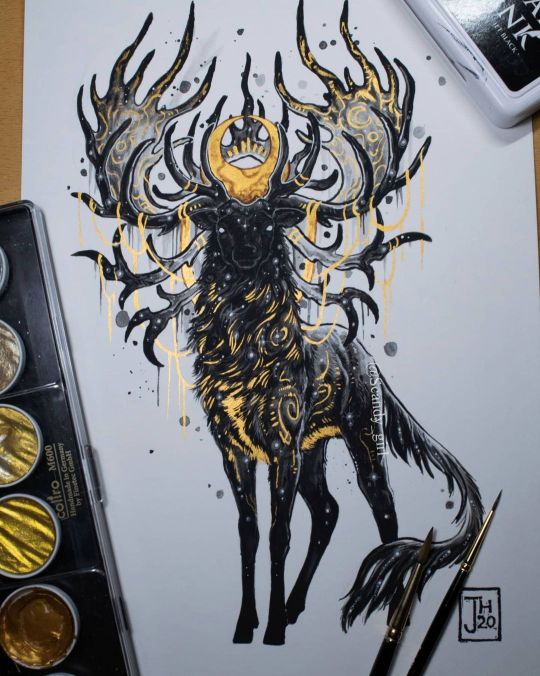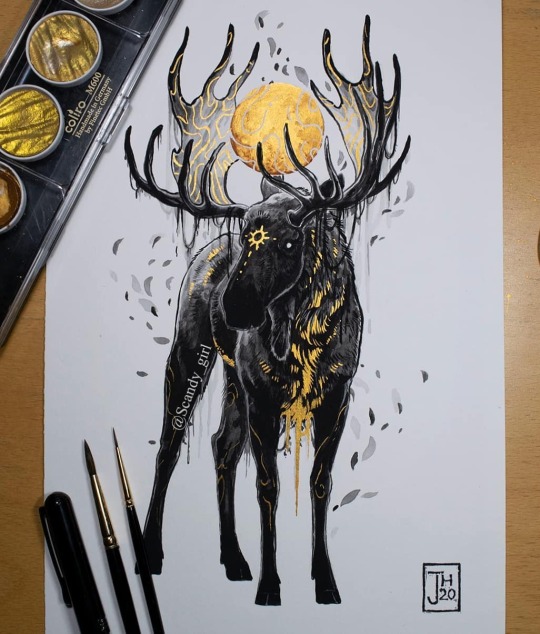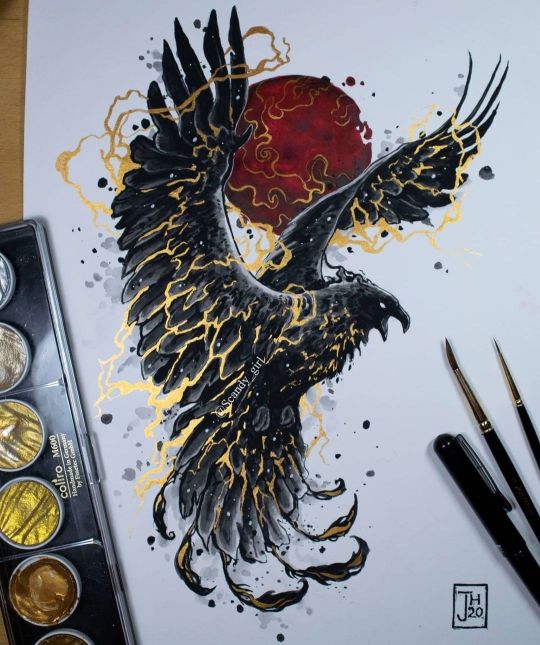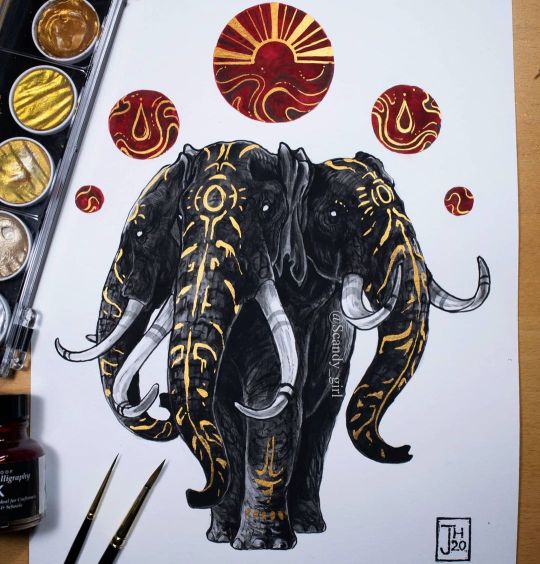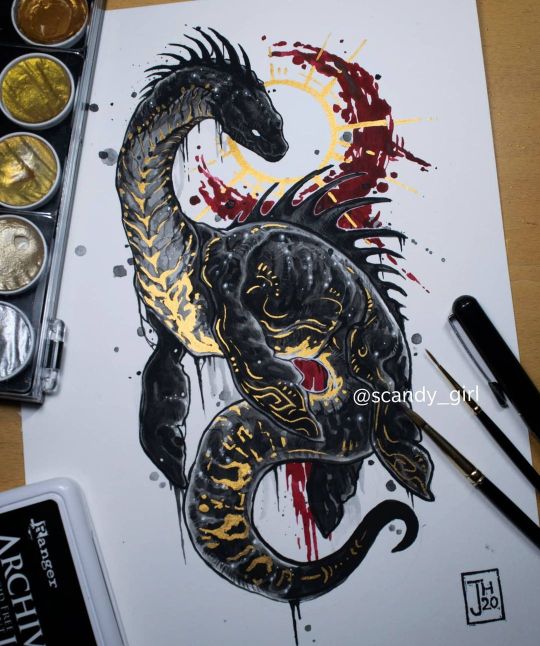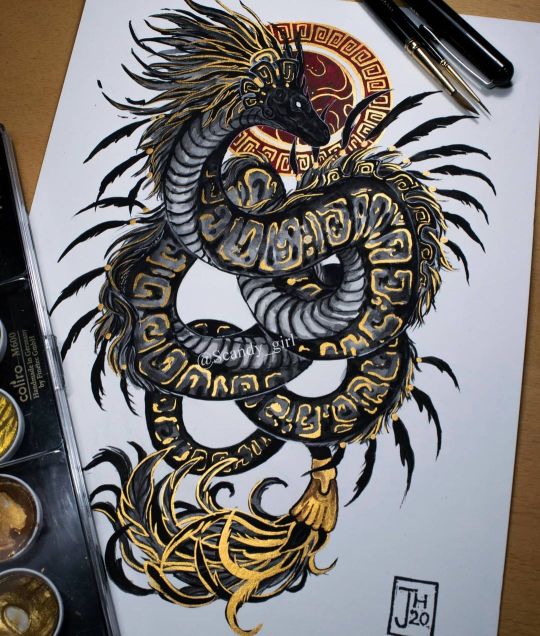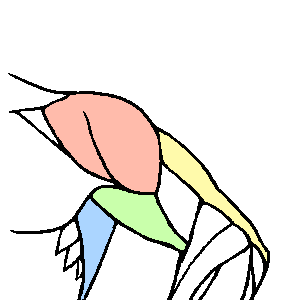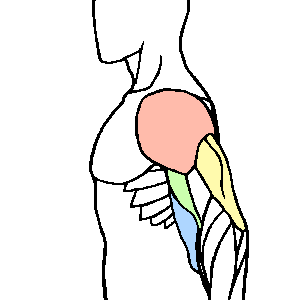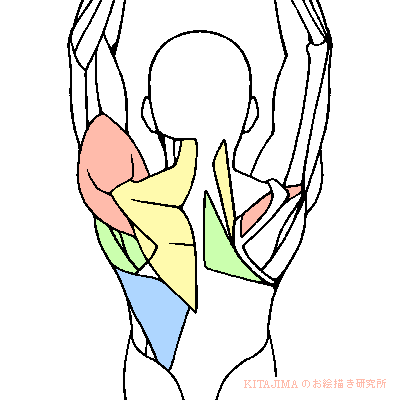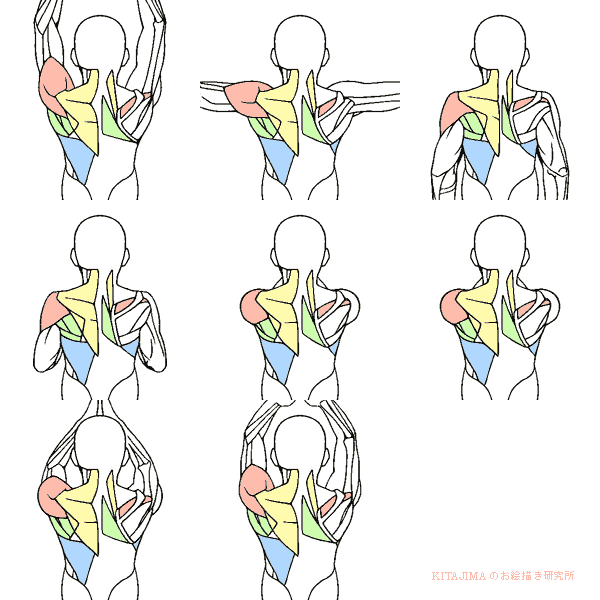*an intelligent, deep, witty and meaningful statement about me, the life, the universe and everything*
Don't wanna be here? Send us removal request.
Text
trump dies of congestive heart failure before being sworn in charge to like cast to reblog
78K notes
·
View notes
Text



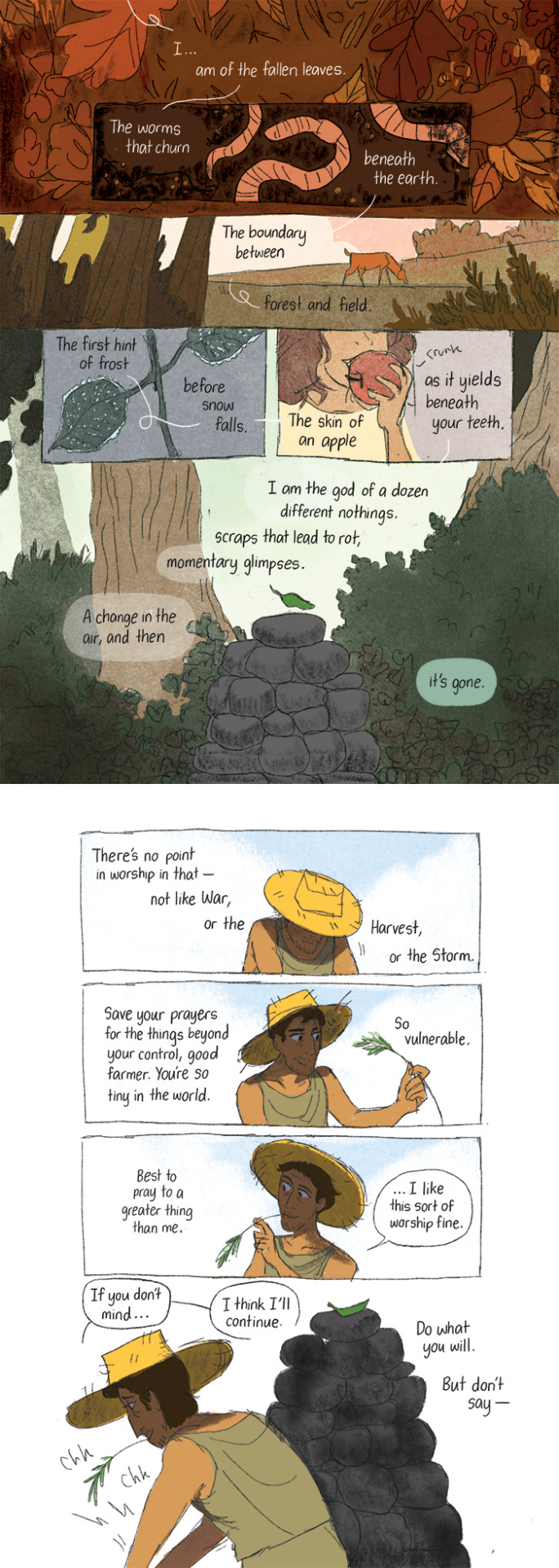

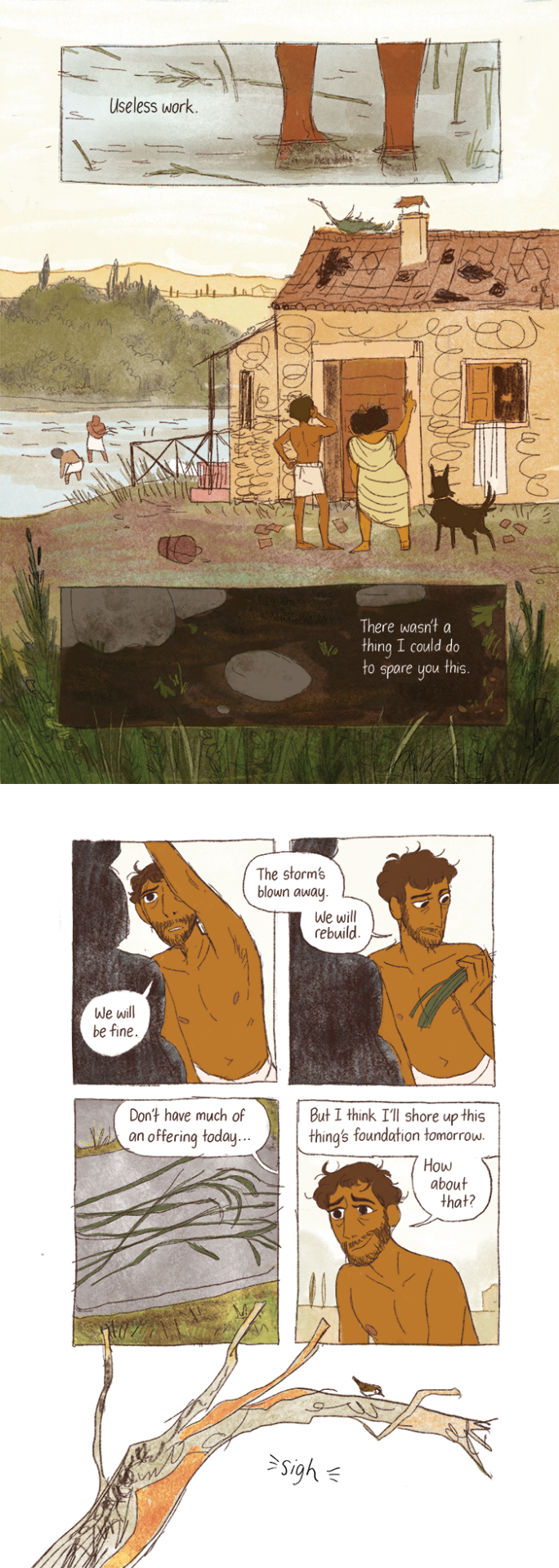

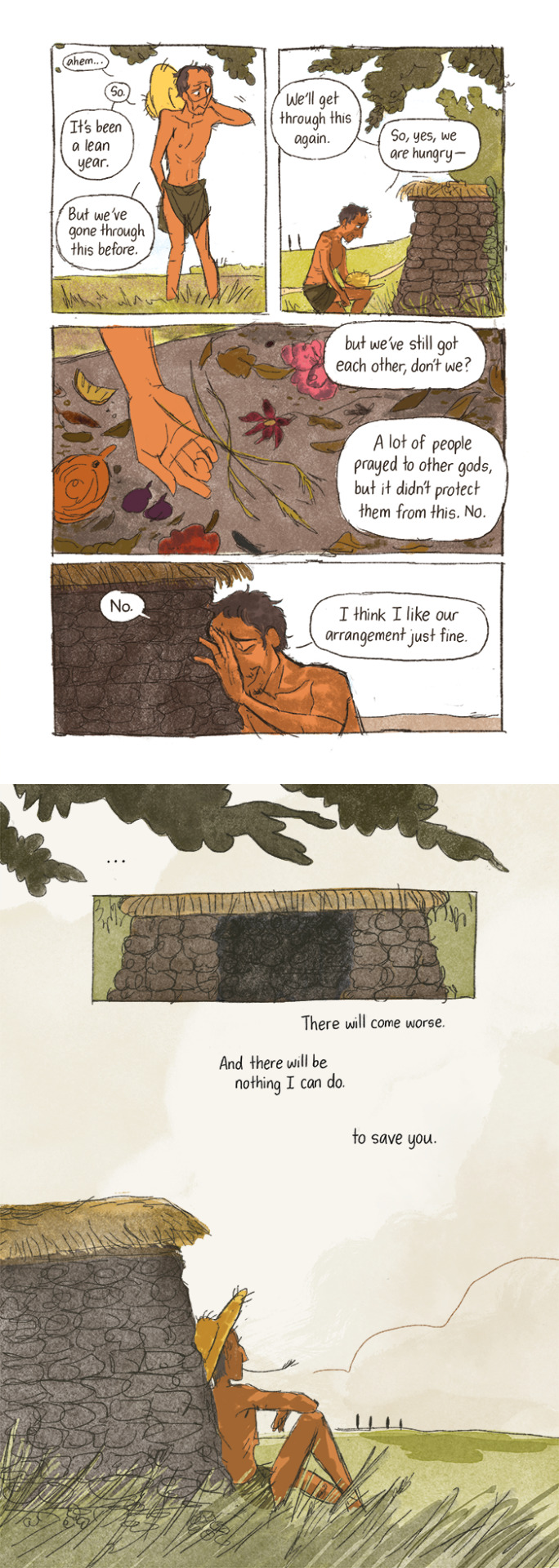




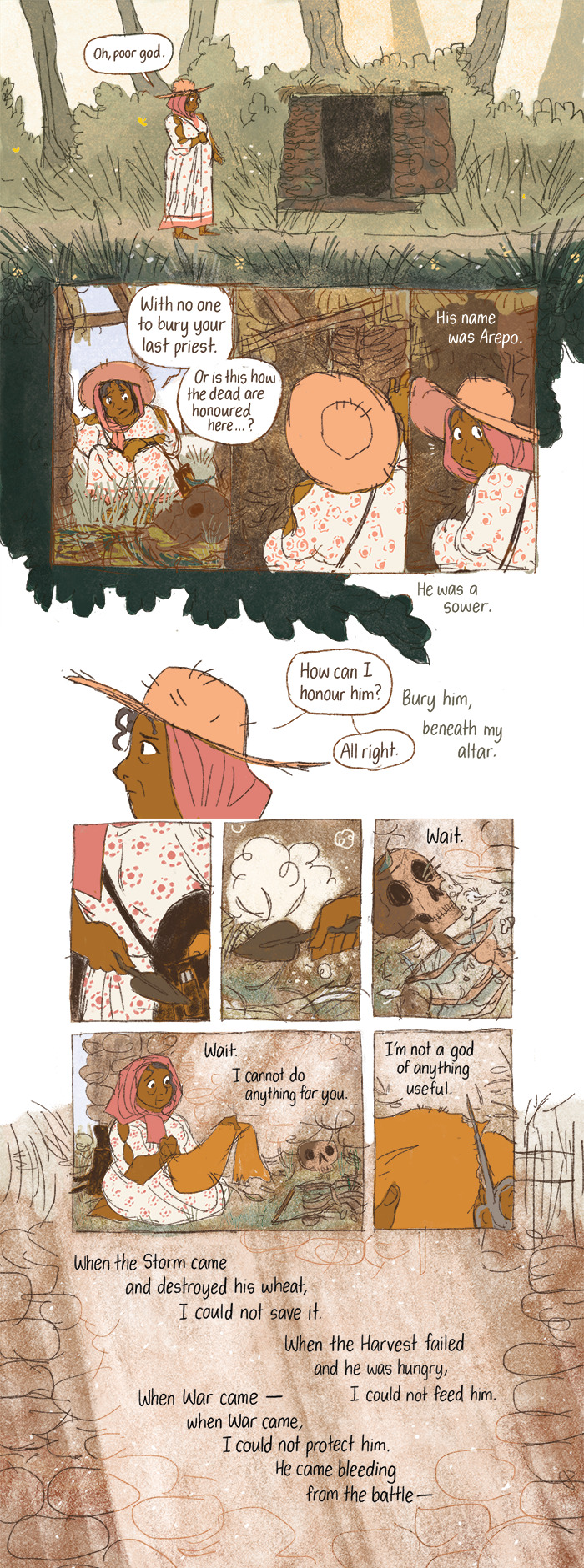




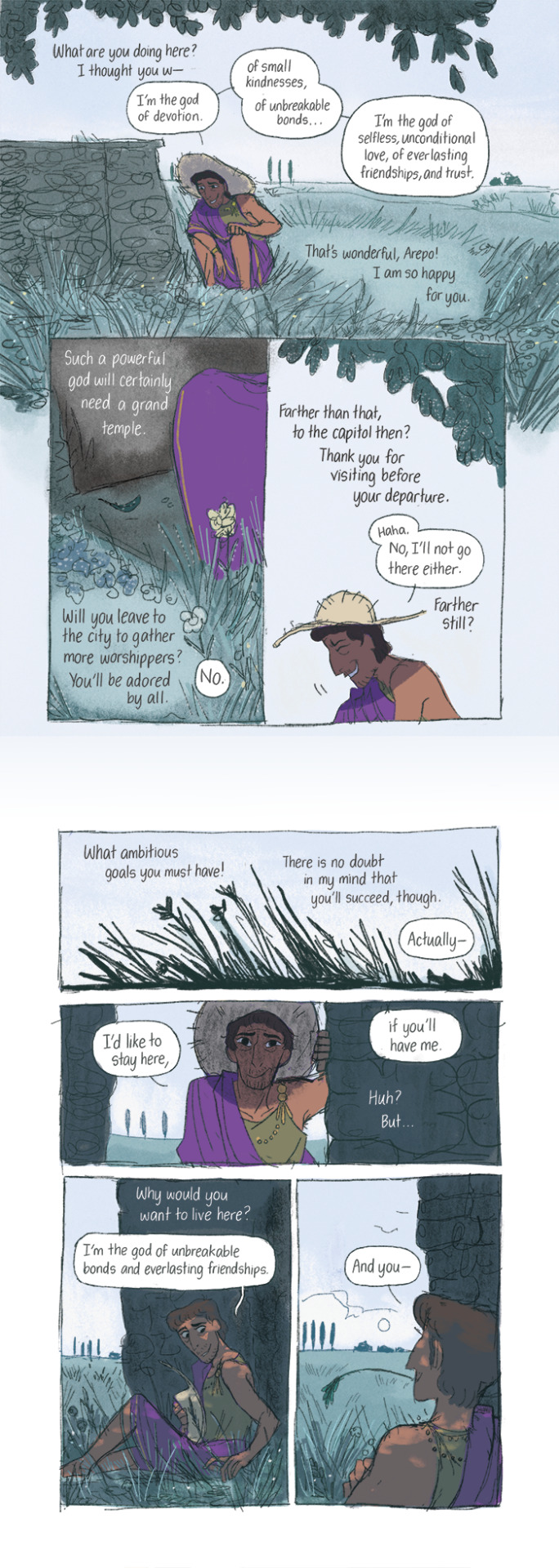

My adaptation of the God of Arepo short story, which was originally up at ShortBox Comics Fair for charity. You can get a copy of the DRM-free ebook here for free - and I'd encourage you to donate to Mighty Writers or The Ministry of Stories in exchange.
Again it's an honour to be drawing one of my favourite short stories ever. Thank you so much for the original authors for creating this story; and for everyone who bought a copy and donated to the above non-profits.
128K notes
·
View notes
Text

Shearing half a sheep seemed a simple way to show a season's growth of wool, but photographer Cary Wolinsky was wrong. The half-shorn sheep tended to lose their balance and topple to wool-ward. It took many tries before merino sheep number 30 “became our hero," Wolinsky said.
56K notes
·
View notes
Text
so much hate on the dash rb to hug the person you reblogged this from <3
84K notes
·
View notes
Note
In a post on the WWC blog, you offered some sources on non-binary and trans people in Late Antique and medieval Europe and the Eastern Roman (Byzantine) Empire to the OP of that post they commented, but while I'm not the OP, I was wondering if I could see those resources if possible? Thanks for your time!
Non-Binary and Trans Identity in Late Antique and Medieval Europe and the Eastern Roman Empire
“According to nature I am a woman, but not according to my thoughts.”
- Amma Sara, desert Christian ascetic c.5th Century CE
In this post:
- an introduction to gender non-conformity in this time period and place (mostly on ascetics, eunuchs, and an intro to Christian theology on absence of gender in human nature)
- a list of gender non-conforming AFAB saints.
- a list of further reading subdivided by topic (including later medieval and some western european sources)
In early Christianity, there was a belief that one could become closer to God by becoming ‘above gender’ (like God, who is without gender). Similarly, when one went off to become an ascetic in the desert, one sought to live the ‘angelic life’, also with strong genderless connotations. This sometimes manifested in obfuscating gender, partaking in gender roles coded as belonging to a different gender, and also living life as a different gender to one assigned at birth.
Lots of accounts of people who lived this way are preserved in hagiography – lives of saints, where some of them are filled with more fantastical details (as in the life of Thecla), whilst others are quieter and with less grand narratives. The fantastical side to these stories might also be of use to tumblr people here though, since the original asker this post is in response to was interested in the intersection between trans, non-binary, third gender people, and magic.
On the topic of third gender and magic, I recommend looking into the history of eunuchs. Eunuchs feature in many cultures, but here I’m only going to talk about them in an Eastern Roman context (during the 'Byzantine' Empire, so about 4th-15th century). In Eastern Roman society, eunuchs were recognised as a third gender – they wore their clothes and hair differently, ate differently, were prescribed different medicines and diets by physicians, and could inhabit different spaces in society. This latter point is especially important, since eunuchs were seen as occupying a liminal and often angelic role in society, and were sometimes associated with holy or magical occurrences. There was also a lot of persecution and denigration of them too. I will link Ringrose’s book at the bottom of this post, as she’s done a very comprehensive study on eunuchs in the Eastern Roman Empire.
In terms of ascetics who chose to live as another gender, a lot the records we have of people who chose this life are those who were assigned female at birth. There’s rightly been some critical study of the portrayal of this in sources, since there has sometimes been a religious rhetoric of ‘womanhood’ being something that is lesser than a ‘spiritual maleness’ which was sometimes encouraged. And this is contextualised by a host of social situations that might encourage a woman to escape her station in life, either to get out of a marriage or to flee from some other pursuit or expectation put on her. A lot of scholarship however has neglected to mention two important things: 1) Regardless of cultural context or reason, lots of the people in these sources identified as male, took a male names, pronouns, lives as monks, sometimes in male monastic communities, were almost only ever outed against their will, and frequently requested to be buried and remembered as male. It is frankly insulting not to respect the wishes of these men to be remembered as such. 2) There was a Christian theological tradition of eschewing or obfuscating gender in order to draw closer to the divine, and it's also insulting not to respect the sincerity of these people in their choices to become an ascetic. Perhaps some of them did choose for some social reasons to “hide” in a monastery, but it insults the intelligence and spiritual sincerity of these saints not to acknowledge that there were spiritual reasons for wanting to live their gender in a different manner. It’s worth remembering that these records are of saints - people who were considered to have lived such a holy life that they are remembered as paragons of Christian living and intercessors for those to come. Essentially, some scholarship is very quick to say these are persecuted ‘women’, when the saints themselves tell us they are men and that the choice to identify as such is related to their faith.
It's also worth bearing in mind that being an ascetic of any kind can be seen as being a different ‘gender’. Maleness in Eastern Roman society was especially dictated by social customs such as being the head of a household, being sexually active, wearing hair and clothes in a certain way, partaking in the public sphere in a certain way – and part of Christian asceticism is a deliberate removal from this kind of citizenship and practice of gender. So it's important to bear in mind that the kind of trans identity, non-binary identity and agender identity of ascetics in early Christianity is not something that can easily map onto our own understandings of gender today. Indeed, a division into sex and gender is already anachronistic to Late Antiquity, since they were perceived as a single thing and also tied into many other factors in Eastern Roman society. I think contemporary terms like transgender are still some of the best we can use though, firstly because they give us a continuous queer history that we’re often denied as trans people today, and secondly because they much better reflect the lived experiences of these historical people than the terms used in current academic literature (‘cross-dressing’ and ‘transvestite’ are used, ignoring that someone who lives 50 years as a man and died asking to still be called one is not ‘cross-dressing’ as a man). The kind of maleness of a monk though, trans or cis, is quite different from the maleness of a Byzantine male citizen (or of a eunuch citizen).
In terms of the theology behind this Christian understanding of gender, it especially takes as its touchstone Paul’s words that there is no male or female in Christ (Gal. 3:28), and also Christ’s words that there there will be no marriage after the resurrection (Matt 22:30). St Gregory of Nyssa, St Macrina the Younger (Gregory’s sister), and St Maximus the Confessor, all exceptionally important early Church theologians, developed a more robust theology of gender in order to understand how these statements fitted in with the Genesis story of human creation. I will link to a more full explanation in articles below, but the short-hand is that they believed that the human being was originally created without any sexed or gendered characteristics. Sex and gender were introduced after the fall in order that a physical kind of procreation would be possible (prior to the fall, some kind of immaterial reproduction was thought to maybe occur). Theologians like Maximus thought that your sex and gender could be important, but only because you made them an important part of your holy journey towards communion with God. (The end hope for all creation in early Christian Greek thought is participation in God, ‘deification’ or ‘theosis’, where you become God, though a distinction is still maintained between creation and Creator. You participate by grace rather than by essence.) This means that sex and gender are pretty malleable in this kind of theology, and in Maximus’ thought, there is even an implication that one ought to explore one’s gender in a personal and creative way in order harness it to a search for trying to live virtuously.
Not only were humans thought to have been created without sexed characteristics, but they were also believed to be resurrected into a perfect kind of humanity that would also be absent of these characteristics. So the absence of sex and gender was seen as a holy state humans would one day return to. Whilst Gregory and Maximus aren’t in a majority of Christian theologians who held this position, they were exceptionally influential, especially in monastic movements. To see this kind of theology in action, it's worth reading Gregory’s ‘Life of Macrina’, a short read easily available in English translation. In it, he wonders if his sister can really be called a woman any more, since she has somehow overcome the genders of fallen human nature because she’s so holy. He also obfuscates gendered language around her to show this, calling her both a mother and father to their younger siblings, talking about her ‘manly’ characteristics in not lamenting, and using mixed Greek grammar when he calls her “the teacher” (hē didaskalos) - using a female particle with the male noun. This obfuscation of language is a big part of Gregory’s theology when he talks about God too. He is famous for his ‘apophatic’ language – trying to express that holiness is beyond words and comprehensibility by using paradoxes of language. So the way he talks about his sister overcoming gender directly parallels the way he talks about the unknowability of God as Macrina draws close to the divine.
Okay so this has mostly been about early Christian theology especially in the Eastern Roman Empire. Stories particularly of AFAB people who became Christian monks are more widespread than this – both predating the Eastern Roman Empire, and post-dating it and extending into what we now think of as Europe today as well. I will provide a list of some of the lives of these saints below and key details about them, because whilst you may want to do your own research, it is a very transphobic field of study and can be difficult to stomach.
My knowledge outside of the above area is limited, but I’ve been lucky enough to get to know many medieval scholars who work especially on trans and non-binary themes in medieval literature, especially old French and Norse literature as well as accounts of gender non-conforming holy people in the British Isles. I will provide links to their research below too. There are lots of literary tales for example of knights who, before they put on armour, held positions as princesses, and then go on to have romantic entanglements with other knights, or princesses, or have crises of identity or debate their own gender and possible fluidity of gender, so plenty of resources out there on European-centric themes of breaking gender binary (especially since that binary didn’t even exist in mainstream society much of the time, for example with eunuchs and ascetics).
List of Gender Non-Conforming Saints in Late Antique & Medieval Europe & the Eastern Roman Empire
Here is a list I’ve compiled from Butler’s Lives of the Saints. This was an 18th century English collection of translated hagiographical notes, full of ‘colourful’ (transphobic) editor notes woven into the retellings of the original stories (many of which are spread across different manuscripts). It was republished in four abridged volumes in 1990, apparently with some of those colourful additions removed, so I dread to think what the original was like. Below are my notes which are a bit fragmentary, but bulletpoint what I thought to be the key areas of interest. This is a list of most of the gnc saints I could find in the volume, including those who only put on men’s clothes for a day, or grew a beard to put off a suitor. I put in strikethrough their deadnames, which are provided because that’s annoyingly how you will find them listed in all academic sources. Direct quotations retain incorrect pronouns. In my own notes I try to use the saints’ pronouns of choice or a gender neutral ‘they’ when it’s more ambiguous what they may have wished. Please also note the direct quotations include transphobic language such as use of the terms of ‘disguise’ and ‘discovered to be a woman’. There are more saints than this as well, these are just the ones I could find in this particular book.
One additional note: if you aren’t familiar with the genre of hagiography these might come as a shock. A hagiography is a text published after the death of a person (often shortly after, but can be longer) who during their life was a source of piety, wisdom and inspiration. Usually they also have a following after they’ve died of people who pray for the holy person to intercede on their behalf and teach them to become holy people too. So the hagiography is meant to explain to others the miracles the holy person did and how amazing their life was, justifying their recognition as a saint (lots of these were before ‘official canonisation’ by the Church was a thing). They are stories full of miracles that emphasise the piety and spiritual hardships of the person they are about.
Source: Butler’s Lives of the Saints. Thurston, H.J. & Attwater, D. (eds.) Maryland: Christian Classics, 1990 (first published 1756-9)
Smaragdus/Euphrosyne, vol.1 p4 (Fifth Century?) (Feb 11)
“When the interview was over, and Euphrosyne began to think matters out, she came to the conclusion that she could not count upon being safe from her father in any nunnery in that country, for he would be sure to find her and carry her off by force. She therefore secretly changed into man’s attire and slipped out of the house by night – her father being still away.” 4
“No one ever suspected her sex, and she soon gave proof of extraordinary progress in virtue. She had many trials and temptations, but she overcame them all. Because her beauty and charm were a cause of distraction to the other monks, she retired to a solitary cell where she saw only those who desired her advice.” 5
“She recognised him [her father], but he did not know her, since her face was almost hidden and she was much changed by her austerities. She gave him spiritual consolation, but did not make herself known to him till she was on her death-bed many years later.” 5
Dorotheus/Apollinaris, vol. 1 p33 (c. 4th century) (January 5; Pealgia Oct 8)
“[…] Apollinaris who is the daughter of the ‘Emperor’ Anthemius, runs away from home, disguises herself as a man, calls herself Dorotheus, and leads a hermitical life in the desert under the direction of the renowned ascetic, Marcarius.”
charged with sexual misconduct (with own sister) and has to reveal who he is to his own father in order to prove his innocence.
“However, after obtaining her sister’s complete cure by her prayers, she insists on return to the desert where her sex is only discovered by her fellow hermits after her death.”
Marinus/Marina, vol. 1 p313 (no date) (July, vol. iv) (July, vol. iv)
A child brought by their father to the monastery and lived as a boy there.
Later accused of being the father to a child. Was given the child to raise as his own.
The injustice done to Marinus was discovered only when his sex was revealed after his death, 314
Anastasius the Eunuch/Anastasia Patricia, vol.1 p546 (no date) (Egyptian ancestry, lived in Constantinople) (March, vol.ii)
given the habit of a monk in order to flee marriage to Emperor Justinian. Told never to emerge or to let anyone enter. Fled to Alexandrian convent, then fled to the desert when the emperor searched for them.
Lived as “Anastasius the Eunuch” for twenty-eight years, “and in all that time she never beheld the face of man, but gave herself up to prayer and mortification.” 547
“Then the abbot and his disciple buried her in her habit according to the wish she had expressed just before her death.” 547
Joseph/Hildegund, vol.2 p135 (1188 AD) based in Cologne (April, vol. ii)
Lived whole life as ‘Joseph’ at first as a child to protect them whilst riding with their father
continued to use ‘Joseph’ for the rest of their life. “She received the Cistercian habit and remained at Schoenau until her death, although she made two or three attempts to run away, apparently fearing that her sex would be discovered. She never took vows, but died a novice. Only after her death was it discovered that she was a woman.” 134
Wilgefortis/Liberata/Uncumber vol.3 p151 (no date) (July, vol. v)
prayed for help because she had sworn herself to virginity but was being forced to marry
a beard and moustache grew on her face, so the suitor refused to marry her
her enraged father had her crucified.
Natalia vol.3 p507 (c. 304 AD) (August vol. v p808-11) (pdf 1990)
lived in Nicomedia
cropped her hair, put on men’s clothes briefly in order to gain access to the prison her husband was in.
“Theodora” of Alexandria vol.3 p538 (no date) (September, vol iii) (pdf 2021)
“They relate that she was the wife of Gregory, prefect of Eygpt, and that, having fallen into grave sin, she fled away from her home to expiate it in a monastery of the Thebaid. Disguised as a man she lived for many years among the monks a life of extraordinary austerity.” 538
“[...]St Theodora was accused of being guilty of seduction and was vindicated only after her death.” 538
died in Alexandria
Thecla of Iconium, vol.3 p623 (First Century?) - (pdf page 2106)
versed in philosophy and literature, learned from St Paul
Gregory of Nyssa says that “she undertook the sacrifice of herself by a life dead to the senses, so that nothing seemed to remain living in her but reason and spirit.” 623
broke off her engagement ran off to follow St Paul around. Family and local government were mad.
Thecla was ordered to be burnt but a storm from heaven put out the fire.
she beat up a guy who tried to abduct her
adopted by a queen (this story really has everything)
ordered to be executed in an amphitheatre but the lions had a snooze at her feet instead
threw herself in a ditch and baptised herself. Something about dead seals??
she came out the water in a cloud of fire.
They tried to set bulls on her but she was too on fire.
They released her because her queen friend fainted
Put on men’s clothes and rejoined St Paul. “dressed as a boy” 624
Retired to live in a cave for seventy-two years
did miracles
jealous bandits were sent out to attack her
she prayed and a rock opened up, she walked into it and was never seen again
Galla vol. 4 p36 (550AD, Rome) (October vol iii)
widowed after a year of marriage, decided to become bride of Christ rather than marry again.
“She was not to be turned from her resolve even by the warning of her physicians that if she did not marry again she would grow a beard.” 37
joined a community of holy women.
Pelagius the Beardless Monk/Pelagia vol. 4 p59 (No Date, Antioch) (October, vol. iv) (pdf 2264)
Was an actress with a white donkey and beautiful jewellery
Came to hear St Nonnus’ sermon. Asked him for baptism.
gave up property to the poor, laid aside female garments and put on men’s clothes, disappeared from the city
lived alone in a cave on the mount of olives, where he were known as ‘the beardless monk’
“When those who came to bury her discovered her sex, they cried out ‘Glory be to thee, Lord Jesus, for thou has many hidden treasures on earth, as well female as male.” 60
Athanasia vol 4 p69 (Fifth Century, Egypt (orginally)) (October vol iv) (pdf 2274)
Married to a silversmith named Andronicus in Antioch. Children both died on the same day, spent her(?) days weeping at their graves.
A stranger told her her children were happy in heaven, Athanasia believed this was St Julian the martyr, in whose memory the church was dedicated.
Told her husband and suggested that they renounce the world. Her husband agreed
Made their way to Eygpt and sought out St Daniel in Skete. Daniel sent Andronicus to the monastery of Tabenna and Athanasia to be an anchoress in the wilderness, dressed in the habit of a man. They lived in this way for 12 years.
Andronicus came to know a beardless monk called Athansius, they travelled together and had great affection for each other and didn’t want to be parted. Went to an Alexandrian monastery where they were given cells near to each other.
When it was time for Athanasius to die, he wept because he knew Andronicus would miss him. But said ‘give him the writing under my pillow when I am dead’. Andronicus read it and realised that Athanasius had previously been his wife Athanasia.
Andronicus died shortly after and was buried next to Athanasius.
“Eugenia” vol. 4 p612 (Alexandria, No Date) (Migne PL vol xxi and lxxiii; Migne PG vol cxvi, p609-52)
‘daughter’ of duke of Alexandria, went to live in an abbey in a man’s habit.
Led so holy a life there that they made him an abbot
no one there knew his birth sex, and a lady accused ‘Eugenia’ of adultery before a judge (the judge was Eugenia’s father).
Eugenia was put in prison and condemned to death.
“At the last she said to her father much thing for to draw him to the faith of Jesus Christ. She rent her coat and showed to him that she was a woman and daughter of him that held her in prison, and so she converted her father unto the Christian faith.” 612
Eugenia made many converts and was eventually martyred
apparently the false accusation was prompted by Eugenia repelling the advances of a woman whom he had miraculously cured of sickness.
Further Reading
This field is a very live topic of debate and some of the articles I want to put here aren’t published yet, so I will update this post in about a year’s time when you can read more of this stuff in print. Some authors on this list are trans and nb scholars themselves, whilst others are noticeably not and use very questionable language to talk about these topics (I’ve left off the really old bad ones). I know someone doing Norse literature and gender studies, so I will ask them for a reading list on that, but I haven’t included anything on it below.
Send me an ask if you need help getting any of these, I might be able to help you out.
General
Alicia Spencer-Hall, Blake Gutt (eds.), Trans and Genderqueer Subjects in Medieval Hagiography. (Amsterdam University Press, 2021).
D. Campanile, F. Carlà-Uhink, & M. Facella (eds.) TransAntiquity: Cross-Dressing and Transgender Dynamics in the Ancient World. (London: Routledge, 2017).
Gabrielle M.W. Bychowski, “Trans Metamorphoses and Identity: Medieval Taxonomies of Transgender and Transitioning,” More Fuss About the Body: New Medievalists’ Perspectives. Leah Parker & Stephanie Grace Petinos, ed. (2021).
Gabrielle M.W. Bychowski, “Trans” Companion to Sexuality in the Medieval West, Michelle Sauer ed. (ARC Humanities Press, 2021).
B. Neil & L. Garland (eds.) Questions of Gender in Byzantine Society. (London: Routledge, 2013).
S. Constantinou and M. Meyer (eds.) Emotions and Gender in Byzantine Culture. (Palgrave Macmillan 2019).
A full list of Dr Bychowski’s work can be found here and may be of interest: http://www.thingstransform.com/p/publications.html
Asceticism
Claudia Rapp, Brother-making in Late Antiquity and Byzantium: Monks, Laymen, and Christian Ritual (OUP, 2016).
N. Mylonas, ‘Erasing Alterity: Gendered Characterization in the Different Versions of Vita Anastasiae’. Journal of Australian Early Medieval Association 13 (2017): 19-46.
The Sayings of the Desert Fathers: The Alphabetical Collection. Benedicta Ward (trans.) Oxford: Cistercian Publications, 1975.
S.J. Davis, ‘Crossed Texts, Crossed Sex: Intertextuality and Gender in Early Christian Legends of Holy Women Disguised as Men’ Journal of Early Christian Studies 10 (2002): 1-36.
H. Hunt, ‘Chapter 5: Virgins of God: Manly Women and Transvestite Saints’ in Clothed in the Body: Asceticism, the Body and the Spiritual in the Late Antique Era. (London: Routledge, 2012).
Eunuchs
K.M. Ringrose, The Perfect Servant: Eunuchs and the Social Construction of Gender in Byzantium. (London: University of Chicago Press, 2003).
M. Kuefler, The Manly Eunuch: Masculinity, Gender Ambiguity, and Christian Ideology in Late Antiquity. (Chicago: University of Chicago Press, 2001).
Theology
Michael Nausner, ‘Toward Community Beyond Gender Binaries: Gregory of Nyssa’ Transgendering as Part of his Transformative Eschatology’ Theology and Sexuality 16 (2002): 55-65.
Sarah Coakley, ‘The Eschatological Body: Gender, Transformation, and God’ Modern Theology 16:1 (2000), 61-73.
Cameron E. Partridge, Transfiguring Sexual Difference in Maximus the Confessor. (PhD diss., Harvard Divinity School, 2008).
E. Brown Dewhurst, ‘The Absence of Sexual Difference in the Theology of Maximus the Confessor’ in Philosophy and Society. 32, 2 (2021): 204-225.
Rowan Williams, “Macrina’s Deathbed Revisited: Gregory of Nyssa on the Mind and Passion.” in Christian Faith and Greek Philosophy in Late Antiquity: Essays in tribute to George Christopher Stead.L.R. Wickham & C.P. Bammel (eds.) Leiden: Brill, 1987.
Medieval French Literature
Blake Gutt, ‘Transgender Mutation and the Canon: Christine de Pizan’s Livre de la Mutacion de Fortune’, postmedieval 11.4, 2020 (10th anniversary special edition, ‘Race, Revulsion, and Revolution’), 451–458.
Blake Gutt, 'Medieval Trans Lives in Anamorphosis: Looking Back and Seeing Differently (Pregnant Men and Backward Birth)', Medieval Feminist Forum 55.1 (2019): 174-206.
Blake Gutt, 'Transgender Genealogy in Tristan de Nanteuil', Exemplaria 30:2 (2018), 129-46.
B. Findley, Poet Heroines in Medieval French Narrative: Gender and Fictions of Literary Creation. (Palgrave Macmillan, 2012).
Kimberlee Campbell, “Acting Like a Man: Performing Gender in Tristan de Nanteuil.” In Cultural Performances in Medieval France: Essays in Honor of Nancy Freeman Regalado, edited by Eglal Doss-Quinby, Roberta L. Krueger, and E. Jane Burns, 79–89: (2007).
Francesca Canadé Sautman, “What Can They Possibly Do Together? Queer Epic Performances in Tristan de Nanteuil.” In Same Sex Love and Desire among Women in the Middle Ages, edited by Francesca Canadé Sautman and Pamela Sheingorn, 199–232. New York: Palgrave: (2001).
Angela Jane Weisl, “How to Be a Man, Though Female: Changing Sex in Medieval Romance.” Medieval Feminist Forum 45 (2): 110–137: (2009).
UPDATED: to include recommendations on Norse topics from a colleague.
Norse Archaeology and Literature
Lee Colwill, “The Queerly Departed: Narratives of Veneration in the Burials of Late Iron Age Scandinavia” in Alicia Spencer-Hall, Blake Gutt (eds.), Trans and Genderqueer Subjects in Medieval Hagiography. (Amsterdam University Press, 2021): 177-198.
Neil Price, The Viking Way: Magic and Mind in Late Iron Age Scandinavia. (CUP: 2002).
Brit Solli, ‘Queering the Cosmology of the Vikings: A Queer Analysis of the Cult of Odin and the “Holy White Stones”’ Journal of Homosexuality 54 (1-2) (2008): 192-208.
Neil Price et al. ‘Viking warrior women? Reassessing Birka chamber grave Bj.581’ Antiquity, 93 (367). (2019): 181-198.
Jóhanna Katrín Friðriksdóttir, ‘'With mirthful merriment': Masquerade and Masculinity in Mágus saga jarls’ in Masculinities in Old Norse Literature. (CUP: 2020): 77-94.
Miriam Mayburd, ‘“Helzt þóttumk ek heima í millim” A reassessment of Hervör in light of seiðr's supernatural gender dynamics” Arkiv for Nordisk Filologi 129 (2014):121-164. (ultimately concludes that we shouldn't read Hervör/Hervarðr as trans, but is probably the most extensive consideration of the possibility).
Short paragraph from my colleague on where to look for primary sources:
In terms of primary texts, obviously anything to do with Loki lends itself very well to questions of gender and embodiment (so that's the Prose Edda and the Poetic Edda (esp Lokasenna and Þrymskviða) as our two main sources for that). I will always plug Hrólfs saga Gautrekssonar for how insistent Þórbergr is that he should be referred to only in male terms from now on, which we don't really see elsewhere. Hervör in Hervarar saga spends a while presenting as male, as does Ermengá in Mágus saga jarls. There's also a really interesting (probably) late-medieval poem called Snjáskvæði where an elf-woman is cursed to appear male in the human realm.
Tags: mentions for those who asked for this post
@bluerosegarden @zombat @elvashayam
228 notes
·
View notes
Photo

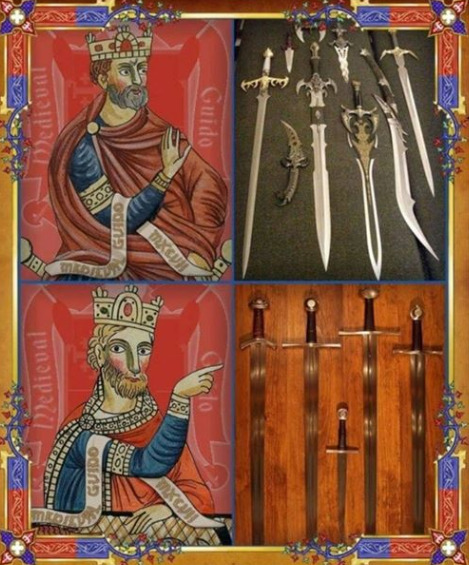
look. look at this beautiful sword meme. i’m going to cry
172K notes
·
View notes
Text
















this is based off a post by @absentlyabbie It got me through last years holidays, and i hope it helps you too.
Hold on.
21K notes
·
View notes
Text
reasons being a plague doctor is a perfect career for autistic people:
never have to look anyone in the eyes
personal space can be quickly and effectively enforced by means of your hurting stick
mask and gloves keep out bad smells and textures
raptor hands are good medical procedure to avoid contamination
can have a very specific set of clothing you always wear and nobody will judge
not forced into nearly as much social interaction
1K notes
·
View notes
Photo

This year drawing for a Christmas card.
10 notes
·
View notes
Text
Curious Zelda












https://twitter.com/curiouszelda
https://www.instagram.com/curiouszelda/
178K notes
·
View notes
Text
👀👀 not gonna name names but SOME of u are sweet and kind and deserve the world and i am rooting for u
343K notes
·
View notes
Text
God okay so I’m going to say this now; PLEASE PLEASE PLEASE do not risk your health or anyone’s in the form of getting a “cheap” binder of ebay or where ever. PLEASE PLEASE PLEASE save your $4-$10 dollars for those cheap ebay ones and put it towards a gc2b binder. Or if you want an Underworks go for that but I highly suggest gc2b. They’re about $40 (with shipping) and will last you WAY longer than any cheap ebay one. They are MEANT for lasting you. I wash mine many times week, wear it daily, Wear them daily. I have two. Had them for almost a year now. But I cannot urge you enough to PLEASE save up your pennies for a PROPER SAFE binder. Binders you can breathe in, binders you can move in, binders that don’t crush your ribs, binders that are comfortable, binders that are safe.
This isn’t a safe binder:

It uses clasps and not compression.
This is a c2b binder; made by trans people for trans people:

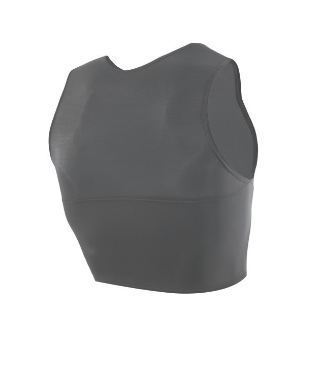
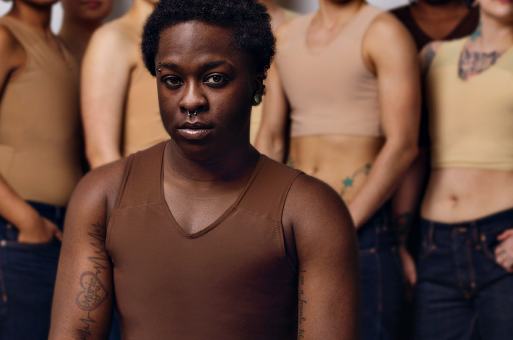
These binders have no clasps but uses spandex to compress you safety.
Measure your chest before ordering to make sure you don’t get one too small or too large.
UPDATE (06/12)
I wanted to add more information on where you can buy binders and info in general about binders
You can buy binders from these sites
@gc2b-apparel (OPs #1 Recommendation)
@shapeshiftersinc
http://www.f2mbinders.com/ (AKA underworks)
http://www.t-kingdom.com/
http://www.lesloveboat.com/shop/index.php?language=en
http://www.danae.info/en/?___from_store=nl
http://showcase.designveronique.com/designveronique/shop/postsurgical/men-1.html
http://en.nabeshirt.com/shop/
Used Binders
If you can’t afford a binder, don’t despair! Used binders are often passed on by post-op trans men or those whose binders may no longer fit. There are a few programs available that help distribute donated second-hand binders:
In A Bind – Started in 2012, to date In a Bind has provided safe compression garments to over 1500 youth in need. Trans* masculine and genderqueer youth living anywhere in the USA can apply to receive a free binder. In a Bind depends on donations. Recently had top surgery? Go up or down a size? Find a style that works better for you? Donate those binders you’re no longer using!
Black Trans Advocacy FTM Binder Grant
MORF Binder Exchange – Since February 2011, MORF has been providing free binders to trans* masculine people in the UK and around the world. The free scheme (all you pay is the postage) has so far redistributed hundreds of binders. In 2014 alone, over 280 binders were sent out.
FTME Free Youth Binder Program – Age 24 and under only; USA only.
Replace the Ace – USA only
Big Brothers Used Binder Program – Donation required
Mazzoni Center’s Binder Recycling Program – Only for youth enrolled in P.A.C.T.S., Philadelphia.
Point 5cc Tshirt Company – Free binder with purchase of t-shirt
Come As You Are’s Binder Bucks Recycling Program – Canada only
Qmunity Binder Exchange – BC, Canada only.
Trans Fellas
Northern Ireland Binder Scheme – Age 25 and under, N. Ireland only.
You can also try asking around for an inexpensive hand-me-down binder on one of themailing lists for trans guys or check out LiveJournal’s FTM Garage Sale and the FtM Sales, Swap, and Support group on Facebook.
How to Choose a Chest Binder
If you still remember your old bra size, you can find out your binder size by using theBra to Chest Size Converter Tool. If you don’t know your old bra size, you can measure yourself the old-fashioned way:
Take a snug measurement of the fullest part of your chest using a tape measure (best if measured while clothed) and write that number down onto a sheet of paper.
Measure underneath your chest where the crease is and write that number down as well.
Add those numbers together and divide the sum by 2. This number will differentiate your size not only from brand to brand but from binder to binder as well.
Selecting a binder brand and style can be difficult: there are so many options that it can be overwhelming! Plus, there aren’t very many reviews of binders other than those about Underworks’ and T-Kingdom’s more popular models. After buying your binder, help make the experience easier for guys in the future by contributing your review to one of the review sites listed below.
Essentially, there are two types of binders: short ones and long ones. The short ones end right at your waist. The down side of these is that if you carry some extra weight, short binders tend to roll up and act more like a bra. The long ones can be pulled down past your waist by several inches, however it’s inevitable that it will still roll up. To reduce the chances of this, wear a belt. Choosing between a short and long binder has more to do with your body type, specifically your abdomen, and not your chest size.
Lastly, consider the location of the company you’re buying from. Buying from a company that’s closer to you can save you a significant amount of money on shipping costs.
How to Put On a Chest Binder
It might seem silly, but you’re probably going to need some help figuring out how to put on your new binder, particularly if you purchased one of the longer styles.
Put your binder inside out and upside down.
Step into your binder and pull the bottom of it up, ideally to your belt line. The binder should still be inside out and upside down.
Use the sleeves as handles to pull the top of the binder (the end closer to your feet) up to your shoulders.
Put your arms through the sleeve holes and adjust your chest to your needs. You may need to pull the bottom of the binder out from underneath itself if you don’t want it folded under. For others, leaving it folded under may help stop the binder from rolling up.
Don’t be disappointed if you look in the mirror and it looks like you have one big boob in the middle of your chest. You just need to adjust your chest. Reach in from the neck hole and push your chesticles down and out. You’re basically pushing your nipple toward your armpit to achieve the flattest looking chest possible.
FTM Chest Binding Tips
Very important: When binding, you should not by any means feel as though you can’t breathe or like you’re going to pass out from a lack of oxygen.
Binders aren’t the most comfortable things in the world. To make binding more comfortable, and to reduce the possibility of the binder moving around a bit, some guys wear a light shirt underneath.
Depending on the size of your chest, you may need to layer clothing on top of the binder to get optimal chest flattening. You’ll find that some of the shirts in your closet require you to layer more than shirts in your wardrobe.
You can swim in your binder. Just wear a sleeveless or sleeved T-shirt over it. Don’t worry if your binder seems less effective after a swim, this isn’t permanent. Simply wash it and it will go back to normal.
Your chest will look bigger than it really is when you look down at it. Check in the mirror for a more accurate side view.
Not all binders breathe well, and the reality is that you’re probably going to get hot. If you’ve already started testosterone, you’re definitely going to sweat. The build up of sweat can irritate your skin causing rashes and sores. Wearing a thin cotton shirt that breathes well underneath your binder may help prevent this. If you find this uncomfortable, try applying corn starch to your body before putting on your binder to help keep it from holding in moisture. If you’ve already experienced skin irritation of some sort, take care of it the same way you would an open wound. Washing the irritated area with anti-bacterial soap will keep it clean and help it heal faster.
Conclusion
Chest binding, as cumbersome as it may seem, can be very freeing for transgender men. There’s a plethora of quality FTM chest binding products available for body types of all shapes and sizes. Regardless of what you use for binding, please remember to put your health first. Now that you’re armed with all the information you need to find the right binder for you, go forth and feel more comfortable in your skin!
FTM Chest Binder Reviews
Chest Binder Reviews Site: Written reviews of various chest binding products. Binders are rated for effectiveness, comfort, and discreetness.
Binder Reviews’ YouTube Collab Channel: This is a collab channel dedicated to providing reviews of a wide variety of chest binders on different sizes and shapes of people.
(Note: These sites are no longer updated.)
More FTM Chest Binding Resources
Binding Safely for Your Body: Tips for All Body Types and Sizes
The 6 Best Tips for Binding in the Summer
Hudson’s Guide to FTM Binding: Includes a complete list of other products you can use for chest binding, such as compression garments and sports bras.
FYI Binding Tips: The Butchelor has some useful tips on how to put on a binder, how to keep it from rolling up, and how to wash a binder.
Do you have any tips about binding? Want to share your experience with a particular binder brand or model? Do you know of other binder manufacturers, particularly those outside of Asia and the US? Please leave your comments below.
Last updated: 05/20/16 (x)
164K notes
·
View notes
Text
oh, of course nobody hates autistic people, that’s ableist and rude!
they just hate anyone who misses social cues or has “odd” interests or doesn’t express emotions in a “normal” way or who has trouble articulating themselves or who understands and interacts with the world differently than they do
19K notes
·
View notes
Text
“So-and-so identity I’m prejudiced against is gonna use up all the LGBT resources!” like this is fuckin Age of Empires II or some shit
82K notes
·
View notes
